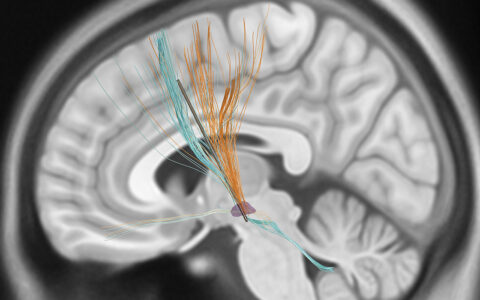“An ounce of prevention” was a difficult prescription to fill in early 2020 as the world first squared off with the hydra in its midst. For Middle Tennessee long-term care (LTC) facilities, COVID-19 struck early and suddenly.
In late March, one facility reported an 80 percent positive rate among their residents, said Victor Legner, M.D., an associate professor of medicine at Vanderbilt University Medical Center and medical director for several of these long-term care facilities. Legner began an immediate and aggressive response to protect the most vulnerable citizens and avoid overwhelming area hospitals.
Since those early weeks, Legner’s seven-person COVID-19 strike force has taught and trained staff at approximately 100 skilled nursing, assisted living and memory care facilities in how to stop the introduction and spread of SARS-CoV-2.
It worked. From April through September of 2020, the team held infection rates down to 15 percent among the facilities hit by the virus, Legner said. “Because we were preventing the wider spread of the disease, the fatality rate dropped to under five percent.”
Sounding the Alarm
On March 5, Tennessee reported its first COVID-19 case. By March 17, Vanderbilt leadership knew this was no blip on the screen. C. Wright Pinson, M.D., deputy CEO and chief health system officer, began an all-out effort to track COVID-19 cases among Vanderbilt patients and the wider community – and forge a response.
It was Friday, March 27 when the first facility to be infected had to evacuate all residents, using a converted Greyhound bus (ambubus) to transport the sickest to hospitals. “Overnight, we had 100 cases of COVID-19 inpatients across four different hospitals, and 35 percent of those patients died,” Legner said.
That was the clarion call for Legner. Over the next several days, he and six nurse practitioners formed a coalition with most of the LTC facilities within a 50-mile radius of Vanderbilt and established themselves as a COVID-19 strike force that would train staff.
“Because we were preventing the wider spread of the disease, the fatality rate dropped to under five percent.”
Evolving Protocols
The team responded to calls for help within about 48 hours, teaching infection control protocols to staff on all shifts, and helping with contact tracing. If a facility had cases, the team worked on containment. With the rest of the facilities, they worked on prevention.
Legner says they were the one of the first to end visitation and institute mask-wearing. Even with these measures and isolating SARS-CoV-2-positive patients, the spread continued. In some cases, the team uncovered causes such as an infected agency nurse working in multiple facilities and warned the other facilities against using staff that moved between sites.
Despite such detective work, by early April, it was clear that isolation units and masks alone were not stopping the spread. They then instituted building-wide isolation and full personal protective equipment, no communal gatherings and meals served in the residents’ rooms.
“These final moves enabled us to hold the spread rate down,” Legner said. The Tennessee Department of Health reported the results to the CDC, which then recommended a facility-wide isolation in lieu of isolated COVID-19 units, if even just one resident tests positive for SARS-CoV-2.
During the weekly meetings, LTC staff and the strike team brainstormed and shared ideas for helping residents suffering from isolation. This led to drive-by windows and iPad visits. One facility suggested a written letter campaign – a “novel concept” adopted by numerous facilities.
October Surprise
Case numbers continued to drop through September, before the progress was abruptly upended. “Two things happened in Tennessee on October 1: the mask mandate was lifted and visitors were allowed back in nursing homes. Then Thanksgiving came,” Legner said. While SARS-CoV-2 positivity rates rose, he says most of the facilities were better prepared, having gone through a case surge before.
Legner says that about 80-85 percent of Tennessee LTC residents have now received their second vaccination, but the strike force isn’t letting up as long as there is a danger of future surges from variants. He reflects, “There was a point when we were doing all this while most of the area hospitals were full. I look at what happened in New York City. Thankfully, we didn’t have that here, and should never come close.”





